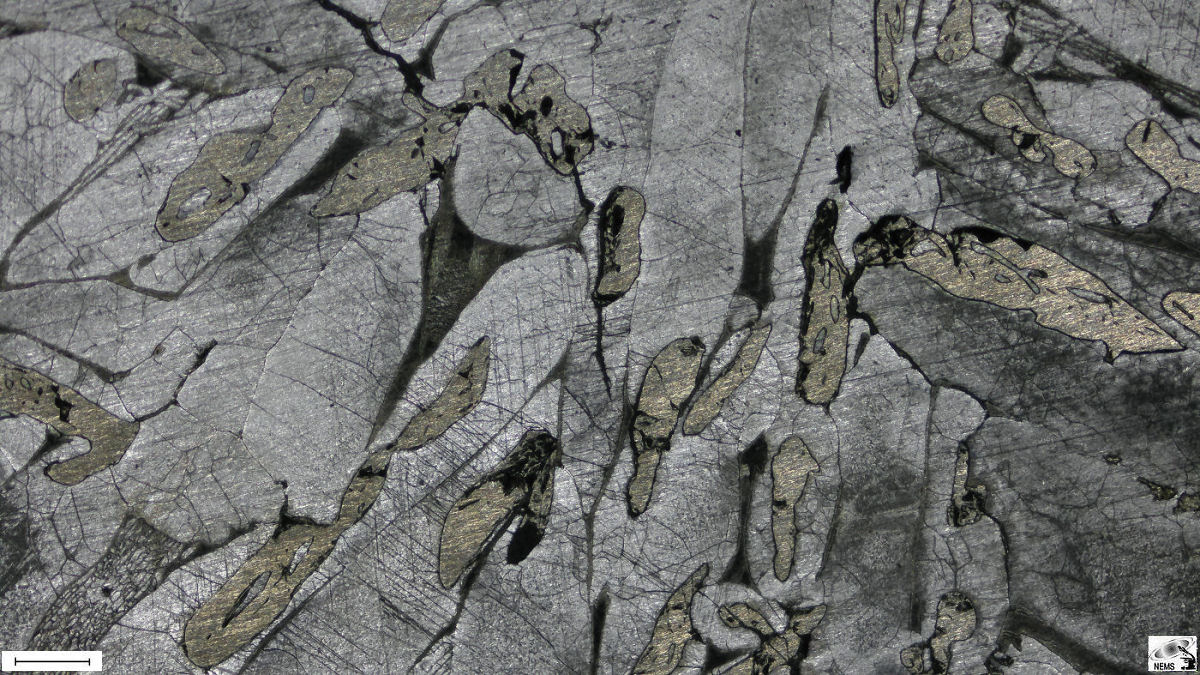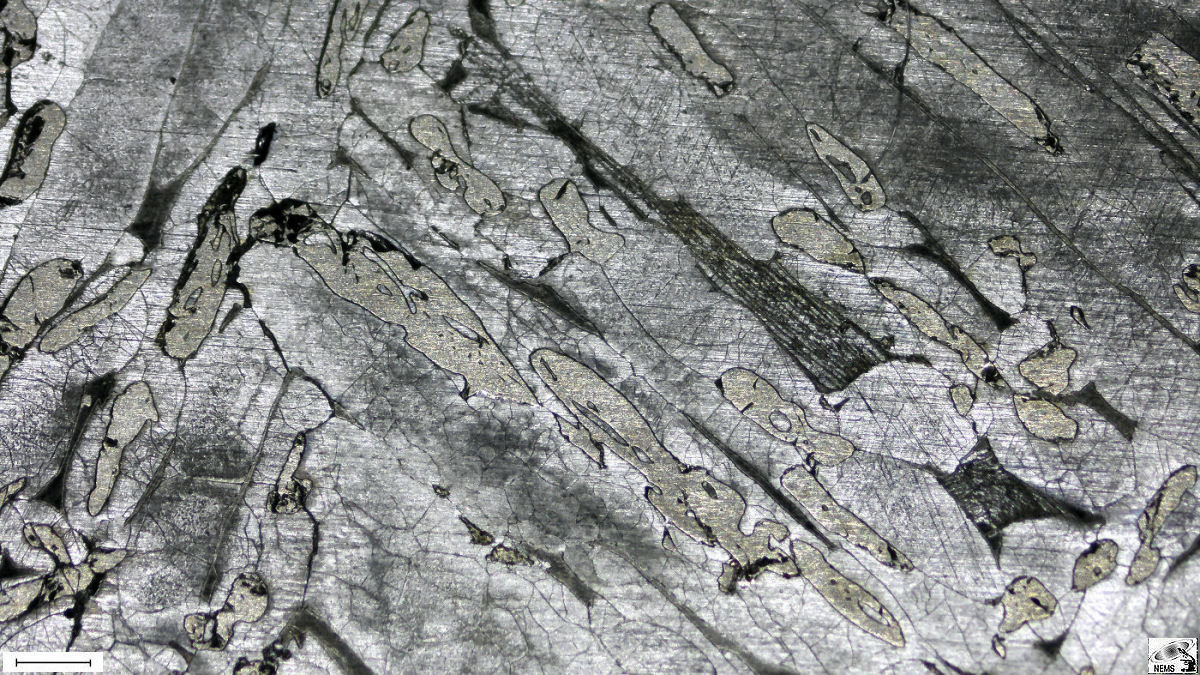|
|
Elongated Cohenite |
| Listing of Structures |
| Back...Next |
| Meteorite: Uruacu, IAB iron |

| Figure 1. Scale bar 1.4 mm. |
| Meteorite: Uruacu, IAB Iron |
| Elongated cohenite. |
| Elongated cohenite bodies, an iron carbide
mineral with a tarnished bronze hue, form through directional growth during the
primary cooling of iron meteorites. Directional growth refers to the
preferential elongation of crystals along specific orientations, driven by
several key factors. Temperature Gradient (Cooling Rates): As the molten metal cools, different regions experience varying cooling rates, establishing a temperature gradient. Crystals tend to elongate in the direction of the steepest temperature drop. Slower cooling allows atoms sufficient time to migrate and organize into extended, structured forms. Chemical Composition: The composition of the meteoritic mass significantly influences directional growth. Spatial variations in element and compound concentrations can drive the migration of materials, encouraging crystal growth along particular paths. Pressure and Temperature Conditions: The specific pressure and temperature environment during cooling plays a critical role in shaping elongated cohenite crystals. These conditions dictate the stability and orientation of the forming mineral structures. Inclusions: Micron-sized inclusions-such as troilite, graphite, schreibersite, and daubréelite-within the meteoritic material serve as nucleation sites. These particles, including troilite, graphite, and certain silicates, can act as seeds for cohenite precipitation from a solid solution, steering the direction of crystal growth. In many iron meteorites, particularly octahedrites, elongated cohenite bodies are observed aligned within kamacite lamellae, reflecting the interplay of these factors during formation. |

| Figure 3. Scale bar 1.4 mm. |
| Meteorite: Uruacu, IAB Iron |
| Elongated cohenite. |
| Listing of Structures |